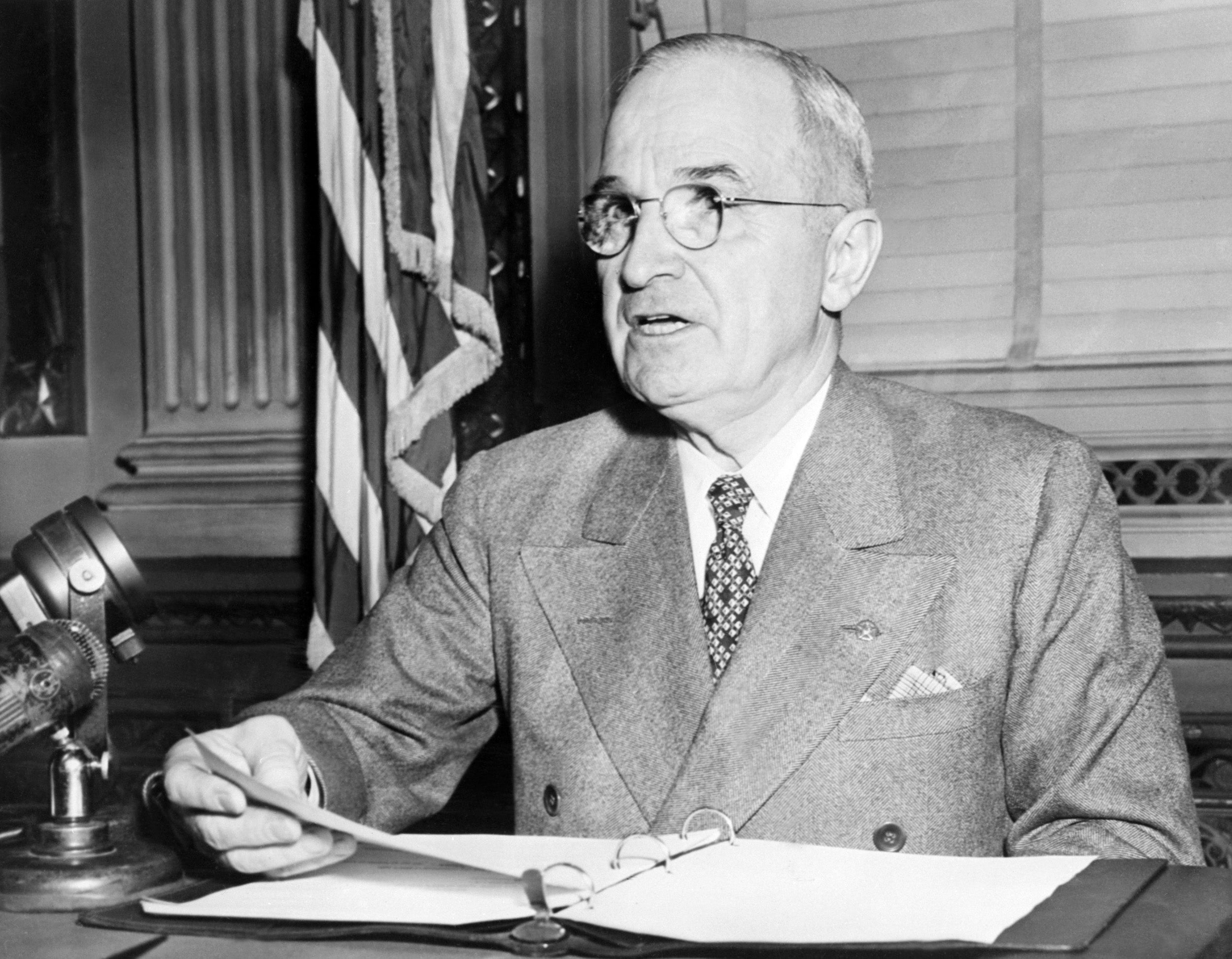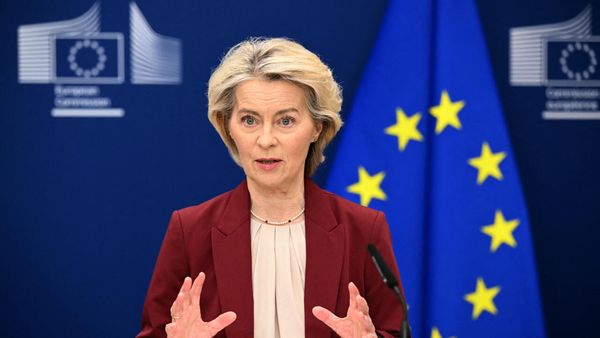President Donald Trump on Monday told reporters he and Secretary of Defense Pete Hegseth want to party like it’s 1946 — by renaming Hegseth’s Cabinet department to what it was last called nearly eight decades ago.
Trump was speaking to reporters alongside South Korean President Lee Jae Myung in the Oval Office when he turned an answer to a question about how long he plans to use the military to augment police in Washington, D.C. into a stem-winding rant about the department housed in the massive Pentagon building.
He said Defense Secretary Pete Hegseth had been “incredible with the, as I call it, the Department of War,” which is what the Defense Department was known as until 1947, before the creation of the modern American defense establishment under the Truman administration.
“You know, we call it the Department of Defense, but between us, I think we're going to change the name. You want to know the truth. I think we're going to have some information on that may be soon,” Trump said.
He justified the bizarre move by appealing to the country’s history of wins in two world wars during the 20th century.

“I think because, you know, Department of Defense, we won World War I, World War II, it was called the Department of War. And to me, that's really what it is. Its defense is a part of that. But I have a feeling we're going to be changing,” Trump said.
“Everybody likes that we had an unbelievable history of victory when it was Department of War, then we changed it to Department of Defense.”
Trump added that there would be more news on that topic “over the next couple weeks.”
The president has previously mused about referring to Hegseth as the Secretary of War and posited that the change in title was a function of political correctness or an expression of weakness of some sort.
But the change in name for the department took place for far more mundane reasons.
It came only a few years after the end of World War II, when President Harry Truman signed the National Security Act of 1947 in July of that year.

The landmark law renamed the Department of War as the Department of the Army, and put it along with the Department of the Navy and the newly created Department of the Air Force into what was first called the National Military Establishment, led by the first Secretary of Defense, James Forrestal.
Separately, the law also created the Central Intelligence Agency and National Security Council, but did not place those under Forrestal’s control.
Two years later, Truman signed a law amending the National Security Act to combine the Navy, Army and Air Force departments into a renamed Department of Defense.
At the time, it was believed — but never stated openly — that the Department of Defense was so renamed because the abbreviation of National Military Establishment, N.M.E., was being pronounced as “enemy.”







